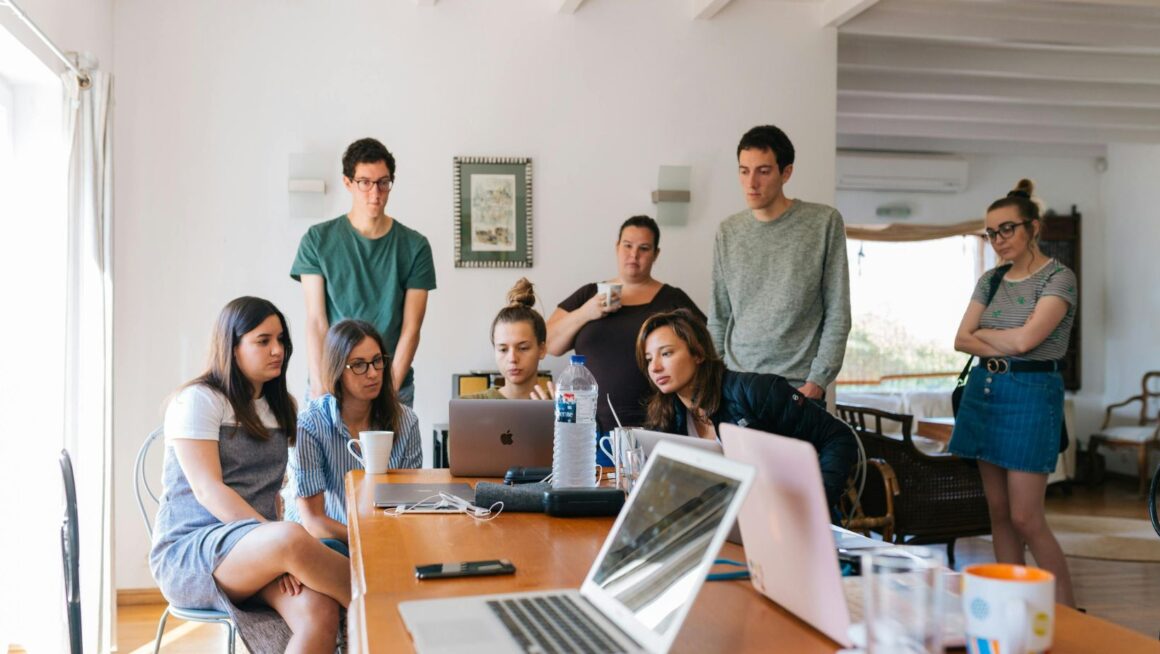Have you ever noticed how the most successful teams seem to move in perfect synchronization, as if guided by an invisible force? Visual unity serves as that guiding force, acting as a powerful catalyst for team cohesion and organizational success.
When teams share consistent visual elements, from matching uniforms to coordinated branding and clearly displayed workflows, they naturally develop stronger bonds and demonstrate improved performance in their collective endeavors.
By implementing visual unity across an organization, teams can experience enhanced motivation, clearer communication, and a deeper sense of shared purpose, ultimately transforming abstract goals into tangible achievements that everyone can work toward together.
Unified Identity Inspires Team Motivation
Visual signals play a powerful role in creating team unity and boosting performance. Teams that embrace consistent visual elements, like matching uniforms or coordinated branding, develop stronger bonds and show increased motivation levels.
Many teams have discovered that moisture-wicking custom football uniforms help build a sense of shared identity, leading to improved team spirit and collaboration. The impact of visual unity extends beyond just appearance. When team members can see their collective efforts represented visually, their individual performance naturally improves.
Research shows that team effort visualization helps drive better results, as people tend to work harder when they can see their contribution to the group’s success. Here’s how visual unity strengthens team dynamics:
- Creates an instant sense of belonging and shared purpose
- Boosts confidence through professional appearance
- Encourages consistent behavior and standards
- Helps new members integrate faster
Visual unity serves as a constant reminder of team values and goals. When everyone looks unified, they’re more likely to act unified, leading to smoother collaboration and better decision-making. This shared identity creates a foundation for long-term success and sustained team excellence.
Alignment and Clarified Goals Foster Productivity

Visual unity plays a vital role in making organizational goals crystal clear to everyone involved. When teams share a consistent visual framework, they communicate more effectively and make decisions faster.
The brain processes information more efficiently through organized visual patterns; in fact, people can process information 60% faster when presented with consistent visual cues.
Teams thrive when they can see their goals and progress laid out before them. Clear visual representation helps eliminate confusion and gets everyone moving in the same direction.
This shared understanding creates a powerful alignment that streamlines workflows and decision-making processes. Here’s how visual unity improves team productivity:
- Creates instant recognition of priorities and deadlines
- Reduces miscommunication between team members
- Enables quick identification of bottlenecks
- Supports better resource planning and allocation
- Makes progress tracking straightforward and visible
When teams implement consistent visual systems, they naturally develop better coordination and focus. This shared visual language helps everyone understand their role in achieving collective goals.
The result is a more productive environment where teams can concentrate on execution rather than clarification. Visual unity turns abstract goals into tangible targets that teams can work toward together.
Transparency Drives Accountability
Visual management tools create a powerful foundation for team accountability by displaying workflows and progress in clear, accessible ways.
When teams can see their tasks, deadlines, and milestones laid out visually, they develop a stronger sense of ownership over their responsibilities. This openness helps everyone understand exactly where projects stand and what needs attention.
The impact of visual transparency extends beyond basic task management. When teams operate with this level of openness, they naturally develop stronger trust and collaboration.
Team members feel more confident giving and receiving feedback, knowing everyone shares the same view of what’s happening.
Managers can spot potential issues early and provide targeted support, while teams gain the autonomy to adjust their approach based on clear visual signals. This creates a positive cycle where increased visibility leads to better communication and improved results.
Integrated Vision Promotes Creativity and Innovation

A clear, visually unified representation of organizational vision plays a vital role in shaping employee creativity. When team members can see and connect with their company’s direction, it ignites their innovative thinking. Research shows that employees who experience visual unity in their workplace demonstrate an increase in creative performance.
Visual elements serve as powerful catalysts for creative expression, helping teams break free from conventional thinking patterns. They create an environment where ideas flow naturally, and innovation becomes part of daily work life.
These visual cues act as constant reminders of the organization’s purpose, sparking fresh perspectives and encouraging team members to think outside the box.
The impact of visual unity extends beyond immediate creative output. It creates a sustainable environment where teams feel empowered to experiment with new approaches.
This freedom to explore leads to breakthrough innovations, helping organizations stay ahead in their field while maintaining a consistent flow of fresh ideas and solutions.
Adaptability and Long-Term Growth
Visual unity plays a vital role in helping teams respond quickly to shifts in their environment. When everyone shares the same visual reference points, they can pivot and adjust their approach with minimal confusion.
This shared visual framework acts like a compass, keeping team members aligned even during periods of rapid change.
Teams that embrace visual consistency show remarkable adaptability. Here’s how visual unity supports organizational growth:
- Clear visual signals help team members spot and respond to challenges faster
- Shared visual references reduce misunderstandings during transitions
- Visual consistency makes it easier to track progress and adjust strategies
- Common visual elements strengthen team bonds during periods of change
The long-term benefits of visual unity extend beyond immediate adaptability. Teams that maintain consistent visual elements develop stronger collaborative skills over time.
This shared visual language creates a foundation for continuous learning and improvement. As team members become more comfortable with these visual tools, they naturally spot opportunities for growth and innovation. The result is a more resilient organization that can handle challenges while staying focused on its goals.
Key Success Drivers
Visual unity serves as a fundamental bridge between team cohesion and organizational success, transforming how teams collaborate and achieve their goals.
The implementation of consistent visual elements, from unified branding to transparent workflows, creates an environment where teams naturally develop stronger bonds and perform at their peak.
By embracing visual unity, organizations can foster a culture of clarity, accountability, and innovation that drives sustainable growth and adaptability in today’s dynamic business landscape.

